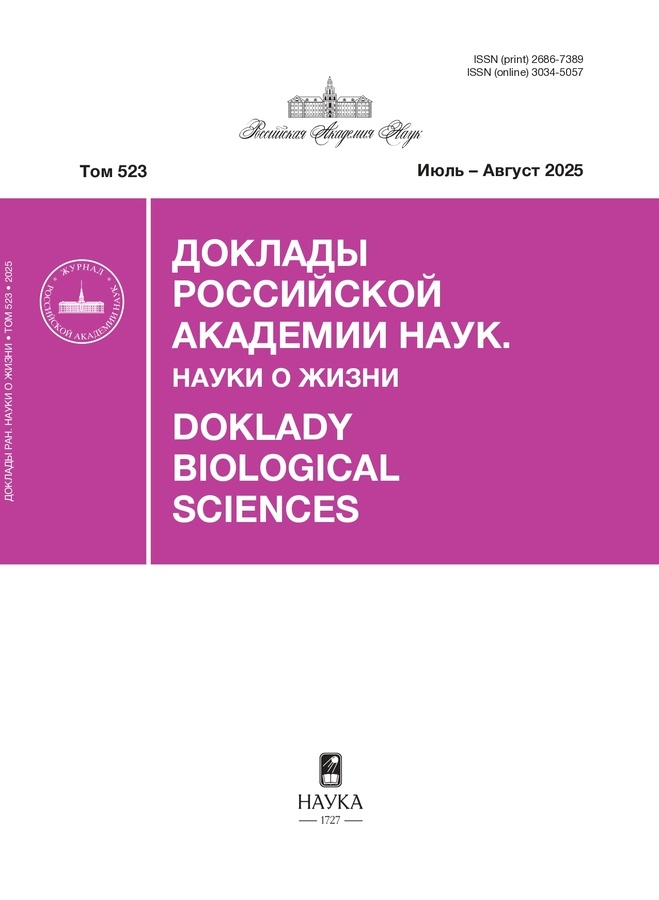Association of daily dynamics of myocardial infarction with distribution of spikes in TiNi-detector readings
- Authors: Dambaev G.T.1, Erofeev V.Y.2, Garganeeva A.A.3, Kuzheleva E.A.3, Okrugin S.A.3
-
Affiliations:
- Siberian State Medical University
- Institute for Monitoring of Climate and Ecological Systems SB RAS
- Cardiology Research Institute, Tomsk National Research Medical Center, Russian Academy of Sciences
- Issue: Vol 523, No 1 (2025)
- Pages: 462-468
- Section: Articles
- URL: https://medjrf.com/2686-7389/article/view/693508
- DOI: https://doi.org/10.31857/S2686738925040148
- ID: 693508
Cite item
Abstract
About the authors
G. Ts. Dambaev
Siberian State Medical UniversityTomsk, Russian Federation
V. Ya. Erofeev
Institute for Monitoring of Climate and Ecological Systems SB RASTomsk, Russian Federation
A. A. Garganeeva
Cardiology Research Institute, Tomsk National Research Medical Center, Russian Academy of SciencesTomsk, Russian Federation
E. A. Kuzheleva
Cardiology Research Institute, Tomsk National Research Medical Center, Russian Academy of Sciences
Email: kea@cardio-томск.ru
Tomsk, Russian Federation
S. A. Okrugin
Cardiology Research Institute, Tomsk National Research Medical Center, Russian Academy of SciencesTomsk, Russian Federation
References
- Расулова В. В. Влияние климатических условий на возникновение острого инфаркта миокарда // Тверской медицинский журнал. 2023:1:1135–1161.
- Kuzmenko N. V., Tsyrlin V. A., Pliss M. G., Galagudza M. M. // Egypt Heart J. 2022:74(1):84.
- Bruno R. M., Taddei S. // European Heart Journal. 2015; 36:1152–1154.
- Русак С. Н., Еськов В. В., Молягов Д. И. и др. // Экология человека. 2013; 11:1–6.
- Козловская И. Л., Булкина О. С., Лопухова В. В. и др. // Тер. Архив. 2015; 9:84–90.
- Ерофеев В. Я., Кабанов М. В., Выборнов П. В., Комаров А. И. // ДАН. 2015. Т. 465. № 6. С. 727–731.
- Ерофеев В. Я., Кабанов М. В. // ДАН. 2019. Т. 484. № 6. С. 682–685.
- Gurevich A. V., Karashtin A. N. // Phys. Rev. Lett. 2013. V. 110. 185005.
- Erofeev V.Ya. // IOP Conf. Ser.: Earth and Environmental Science. 2021. 840:012022.
- Sidorenkov N. S. // Astronomical and Astrophysical Transactions. 2018. V. 30, N 2. P. 249–260.
- Erofeev V.Ya., Kabanov M. V. // IOP Conf. Ser.: Materials Science and Engineering. 2019:698(4):0044045.
- Владимирский Б. М. Космическая погода и биосфера – история исследований и современность. М.: URSS, 2016. 172 с.
- Panza J. A., Epstein S. E., Quyyumi A. A. // New England Journal of Medicine 325 (1991). Р. 986–990.
- Гарганеева А. А., Округин С. А., Борель К. Н. // Сибирский медицинский журнал (г. Томск). 2015. Т. 30. № 2. С. 125–130.
- Eisenberg M. S., Bergner L., Hallstrom A. P., Cummins R. O. // Scientific American 254 (May 1986). Р. 37–&.
Supplementary files











